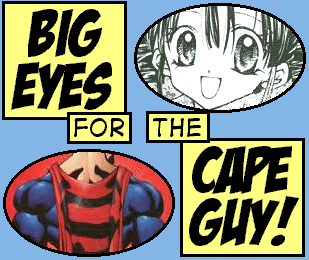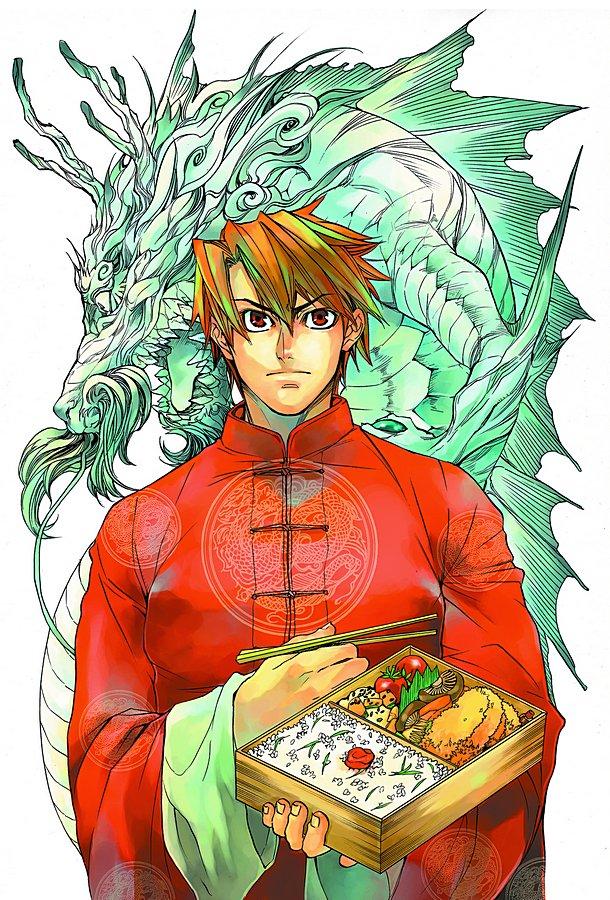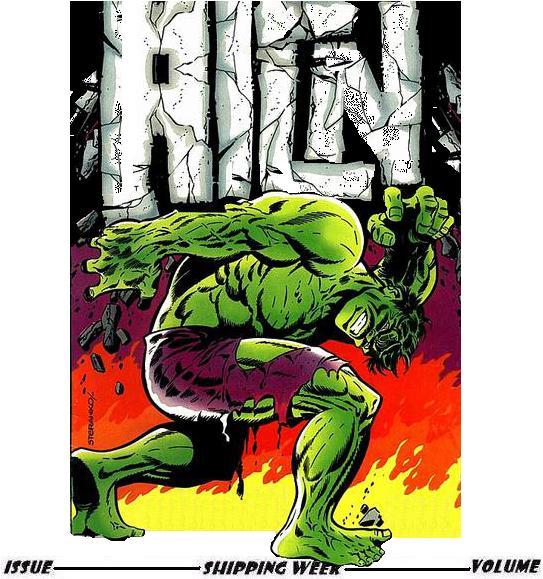
| #12 | 7/29/09 | #8 |
Hey folks, it’s Ambush Bug again with another edition of AICN Comics. I’m a glutton for punishment apparently. Although I’m still recovering from the exhausting experience that was the San Diego Comic Con, my pal Sleazy G and I will be attending this year’s Wizard World Chicago this weekend as well. I’m ready to do it all over again and hopefully, I’ll come back with some fun stuff to report on. WWChicago is always a fun time, so I hope to see you all there.
Before we get to the reviews, there's one more announcement...
Please stop by and visit the all new Trashtalk forums. Trash Talk is the forum created with the opinionated pop culture fan in mind. Worried about getting banned by spamming your own projects or calling out your fellow geek for his questionable taste? No worries here. This is the forum where your opinion counts. We want to hear from you. Post about your likes, dislikes and your fondest desires and put yourself out there so your fellow geeks can trash you for all to see. We can't promise you fame and fortune but it's a safe bet there will be plenty of tears. Trash Talk isn't going to be for the thin skinned. The forum is live now so come on by and contribute to the newest, wildest, free for all on the net.Hope to see you and the rest of the gang there stirring the pot.
And now, on with the show!
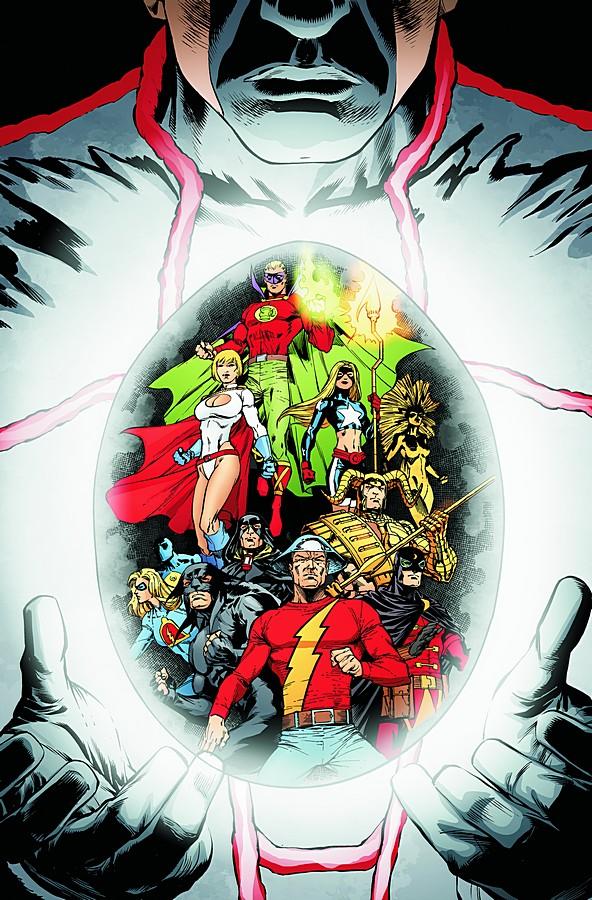
JUSTICE SOCIETY OF AMERICA #29
Writer: Bill Willingham & Matthew Sturges Art: Jesus Merino Publisher: DC Comics Reviewer: Ambush Bug
So although I've been a fan of JSA from the beginning when Goyer, Robinson, and Johns began the rehash many moons ago, I have to say that lately I haven't been a fan of the series. Johns left the book well developed, but stagnant and crowded with over twenty members and very little room for development due to key characters being placed in stasis due to their involvement in INFINITY CRISIS, KINGDOM, FINAL CRISIS, and even BLACKEST NIGHT. And the last few fill in issues didn't amp up the dull factor even though I'm a fan of Ordway and Wiacek. I think I would have appreciated another restart with a #1 issue rather than having to sit through the last two snoozers featuring the Spectre.It's not like I don't like the team or the concept behind the book. Legacy is one of the core concepts of the DC Universe, cementing JSA as one of the most important books the company has to publish. But the problem with the last few creative teams on JSA has been that there have been too many balls to juggle and the writers on the books, while they may have skills telling strong stories, come up lacking when it comes to juggling so many of these characters in an equal and interesting way. The best example of the bunch is Judomaster, who hasn't had a decent arc or moment yet in the entire series. She's cool looking with cool powers, but Johns really did nothing with her in his time on the book. He seemed to want to collect all of these characters in one ballroom, but once it was time to boogie, the same couple of characters got the spotlight, while others had nothing to do at all other than pose dramatically in a group shot.
Although I wasn't a fan of Willingham's last mainstream team book SHADOWPACT, he has impressed me with the way he handles the expansive universe that is FABLES. In that series, everyone is unique, with their own unique storyline, and their own unique function in the beautifully unique Fables World. When I heard he was coming onboard on JSA with the addition of his writing partner Matthew Sturges, I had a great feeling about what I was about to read.
And I wasn't disappointed when I finally did read issue #29. Sure, not all team members gets a time to shine, but Willingham and Sturges juggle multiple problems evenly enough to make what could be a typically cliched story about a slugfest between two super groups into a mystery-layered souffle boiling over with tension and action (I know I'm mixing metaphors here, but dammit Jim I'm a writer not a cook!).
What I loved about this issue was that there was so much going on and there was stuff to do for everyone. There were even two new members added to the already crowded roster, which normally would annoy the shit out of me, but it's handled so well here, I can't help but love it. Jumping between a mysterious dark black egg found in the JSA mansion, a low level crook's hostage situation, and the introduction of two new team members, the story flows effortlessly from one to the next. Are these events connected? Maybe. Maybe not. But you're damn certain I'll be back next month for next issue.
The art by Jesus Merino was pretty good too. Sure Wildcat looks like he's be doused with a gallon of water, but the panels are vivid and varied. The action scenes are well sequenced and clear. And the tension that builds up until the last shockeroo panel is amped by the clarity and precision of the imagery.
All in all, the JSA is back on its way to becoming one of my favorite comics once again. I don't want to take anything away form Geoff Johns because he laid the groundwork for this phenomenal series to launch from, but Willingham and Sturges seem fit to take the team and write them in ways they haven't been written before and for once I'm excited about the expansive cast and hoping Sturges and Willingham stay on the title to make the JSA universe as vast as they've done with FABLES. They're off to a great start!
Ambush Bug is Mark L. Miller, reviewer and co-editor of AICN Comics for over eight years. Check out his short comic book fiction here and here published in MUSCLES & FIGHTS 3 and MUSCLES & FRIGHTS on his ComicSpace page. Bug was interviewed here and here at Cream City Comics. Look for more comics from Bug in 2009 from Bluewater Productions, including the just-announced sequel to THE TINGLER for their VINCENT PRICE PRESENTS ongoing series in stores September 2009 (but you’ve gotta order it from this month’s PREVIEWS – order code: JUL09 0737 to get it!).
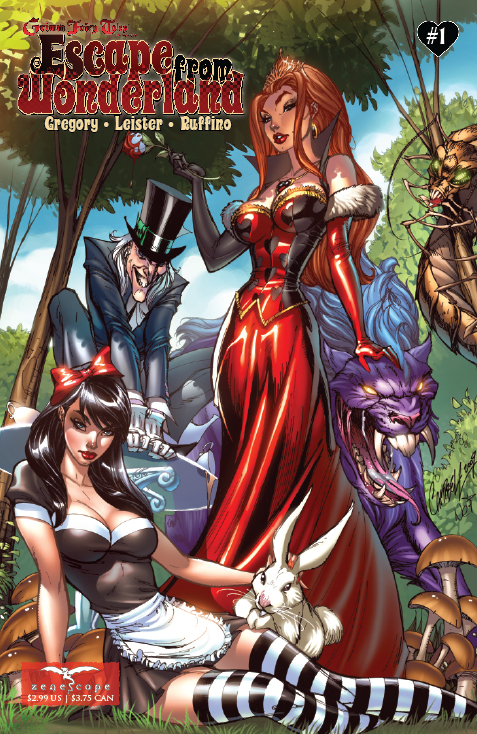
THE WONDERLAND SERIES – ESCAPE FROM WONDERLAND #1
Writer: Raven Gregory Artists: Leister and more Publisher: Zenescope Entertainment Reviewer: Optimous Douche Lost In Wonderland
Don’t judge a book by its cover. Trite to be sure, but this ever so true statement is what denied me the absolute pleasure of getting lost in the looking glass of RETURN TO WONDERLAND, BEYOND WONDERLAND, the myriad of TALES FROM WONDERLAND sides and the latest issue to hit the stands ESCAPE FROM WONDERLAND 1. I’m going to make this review easy to read with clear paragraph starts, so anyone that knows the tale of WONDERLAND already can easily scroll to see what nightmares come to life in the newest issue of ESCAPE #1.I have one solemn vow at Wizard World every year; leverage the half-off trade goodness to traverse into unexplored titles. At most cons I have passed the Zenescope booth without a fleeting glance for the same reason I simply gloss over the naughty, but ohhhh so nice covers at the shop; basically a raging predisposition that what lies underneath the slut-o-ween Flickr photo stream glossy stock covers is essentially soft core porn. This year Zenescope was about 25 feet away from the vending stand; this fortuitous placement (note to marketing) is what gave me a few minutes to observe the phenomenon that converted me from my cheesecake bigotry. As I refueled on my shitty microwave pretzel and diet Pepsi, I watched the league of fanboys flock around the Zenescope tables, but something was slightly off; almost all of these fanboys didn’t have penises. Why the hell would so many women flock to a comic line with covers that so proudly objectify the female form it would make Gloria Steinem spontaneously combust if she got within 25 feet of one? There obviously had to be more to these titles than simply fulfilling the masturbatory fantasies of people too stupid to use the Internet.
Once I had collected the complete WONDERLAND series to date in my manbag, all I had to do was read through the first issue of the RETURN TO WONDERLAND trade to realize the allure. The emotional complexity and themes that are played throughout the entire series coupled with the strong female lead of Callie Liddle, who not only doesn’t fall into the usual clichéd trappings of women confronted with sheer horror - she outright mocks them, makes the appeal to the fairer sex clearer than a looking glass. Yes there’s a panty peek here and there, with a wee bit of “comic” nudity (read as supple shapes no full on naughty bits), but that’s truly it. By the time I had closed the last chapter I realized that not only were the sexual bits tastefully handled, but they also served to make these characters stronger and more real. Also for those that can raise their head above the neck line, they will discover that Leister not only renders facial expressions, he embraces them. That’s import since Gregory’s dialogue and characterization have a 3-D richness that would be muted and misconstrued without each subtle nuance of emotion brought to life visually.
RETURN TO WONDERLAND: Truly better to state, descent into madness. My first impression of the trade that binds the six original issues was “Lewis Carroll couldn’t have imagined this if he licked the ass of 12 bull frogs while getting a shotgun of maui wowie from an elephant.” Yes, the original “Alice in Wonderland” is a tale about the nightmares that permeate the human consciousness, but it’s the madness of a more innocent age (need proof? Disney made a movie out of it). What Gregory and company have wrought is insanity 21st century style. Wonderland is a construct of the forbidden, a physical manifestation of the pervasive evil that seems to smother and suffocate humanity as we blindly crawl towards infinity. The story at the literal level follows the lineage of the Liddles, a family that is bound by an ancient curse to feed Wonderland (Hell, the nether land, Shakari for Star Trek fans) one child from the Liddle line each generation. At the outset we are led to believe that these sacrifices are meant to keep the nightmares of Wonderland away from our own world; later in the story Gregory pulls a nice three-card-monty by unveiling the true purpose behind these sacrifices.
Alice Liddle was the last child from this haunted lineage to traverse into Wonderland and the first to return. However, no one ever truly returns from madness unscathed. Part of Alice was left behind the looking glass: the parts that made her human, essentially her soul. What returns is merely the husk of a human being, sullen and catatonic. Anyone that has had to suffer the living hell of mental illness in their personal lives will immediately relate to Alice’s untreatable depression. Her children merely want to help her, her husband while wanting to help still tends to his own carnal needs in the arms of another woman. This could be your family or any number of families these days that are increasingly succumbing to mental breakdown.
As Alice merely plods through daily life, haunted by the ghosts of Wonderland, her daughter Callie and son Johnny are as maladjusted as one could expect with these two stellar parents. Callie merely hides behind the average rebellions of a teenage girl, where Johnny traverses a much darker plane of existence. This delineation is important since these two teens embody the forces of good and evil to come. I applaud Gregory’s use of journals and blogs to give us our initial peek into the mind’ of our three central players. For the prose adverse, Gregory wisely makes this material supplemental. You don’t have to read the blogs and journal to get the over-arching story, but this material is LOL funny (especially if you enjoy dark humor in Johnny’s case) and helps to scratch past the veneer they both present at the story’s outset. Unbeknownst to Callie she is the next sacrificial lamb to be pushed through the mystical looking glass that sits in her parent’s basement. When she does stumble into Wonderland it is a grotesque nightmare; everything is cranked up to a “Spinal Tap” 11 from the original source material. Eat me, drink me is an exercise in suffocation and drowning. The world of Wonderland is barbaric and brutal instead of playful and snide. The Cheshire Cat is a literal monster instead of a wolf in sheep’s clothing. The Mad Hatter embodies not only madness, but sexual perversion and manic blood-lust, as we have come to expect from today’s lunatic. Once Callie escapes (like her Mother a generation before) instead of succumbing to the madness like Alice, she decides to fight it. In the process of this battle, she loses her mother to suicide, her whore-mongering father to the knife of her brother and ultimately she pushes Johnny through the looking glass as this Liddle generation’s sacrificial lamb. Callie also learns she is pregnant (as if family breakdown and an attack from a world of nightmares weren’t enough for a teenage girl) during the closing pages. With her family in ruins and the inescapable guilt of pushing her brother through the looking glass, she and her boyfriend leave town to start anew.
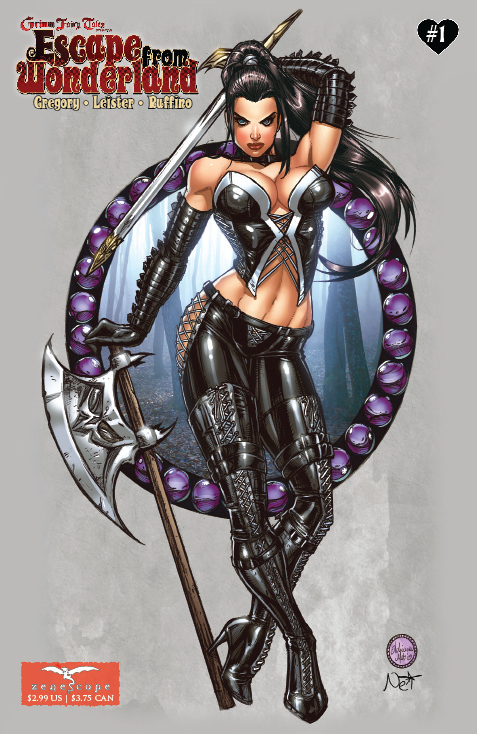 Part of me is truly glad that I read this origin tale in trade format. The exquisite presentation offered by the Zenescope team shows that this compilation was a true labor of love. The beautiful yet eerie sepia hued pages that separate each chapter let you know what’s in store before you ever read one dialogue bubble. Plus, Leister and company’s art work simply shines off the glossier stock paper (hear that Wednesday Comics, yes I said glossy, and for less than $4.00 an issue).
Part of me is truly glad that I read this origin tale in trade format. The exquisite presentation offered by the Zenescope team shows that this compilation was a true labor of love. The beautiful yet eerie sepia hued pages that separate each chapter let you know what’s in store before you ever read one dialogue bubble. Plus, Leister and company’s art work simply shines off the glossier stock paper (hear that Wednesday Comics, yes I said glossy, and for less than $4.00 an issue).TALES FROM WONDERLAND VOLUME 1: This trade collects supplemental origin tales of Wonderland’s wonderful cast of supporting players. Gregory’s story development partners Brusha and Tedesco take on the brunt of the writing chores that unfold the origins of the Red Queen, the Mad Hatter prior to Johnny taking on the mantle, Alice Liddle’s first trip into Wonderland and the tale of a mad scientist seeking immortality by selling his soul to the devil.
BEYOND WONDERLAND: Not losing a beat from the closing pages of RETURN TO WONDERLAND, Callie and the Father of her unborn baby girl have set up camp in New York. Under an assumed name, Callie has left her goth hair darkening phase behind and now adorns blonde tresses like her mother. She works as a waitress, not so much for the money, but as more of a respite from sleep. Even though Callie never physically descends into Wonderland during this 6 issue arc, it is always lurking in the shadows plaguing her dreams and in the end her reality. This story is also inspired by vengeance. After Johnny was pushed into the looking glass he becomes madness incarnate by donning a funny stove pipe hat and becoming the Mad Hatter of Wonderland. Fueled by vengeance against his sister, he does the bidding of feeding Wonderland’s insatiable hunger for innocent lives with zeal. First he disposes of Callie’s boyfriend, next the make-shift cast of characters that have become her new family. While Callie is the ever apparent target, in reality it’s the life she’s carrying that is the ultimate prize. We also learn that the Liddle family was never feeding Wonderland to keep evil at bay, but rather feeding an ancestor’s desire for the perpetual fountain of youth. The story ends with Callie giving birth to her daughter only to see the child whisked away by Johnny and the Cheshire Cat into the looking glass.
2009 ANNUAL: THE HOUSE OF LIDDLE: Even though this annual is entitled THE HOUSE OF LIDDLE, not one Liddle makes an actual appearance. This is a nice Twilight Zone type diversion that focuses on the house where Alice killed herself, her husband was murdered, and her children descended into madness. If anything this story serves to cement the concept that Wonderland is breaking through into our world every day and not simply plaguing the Liddle family. Naturally death ensues and nightmares come to life. What we are left with are the haunting panels of a young boy trapped with horror incarnate until his confinement consumes him.
ESCAPE FROM WONDERLAND 1: The newest and sadly “beginning of the end” installment into the Wonderland mythos hits shelves this week. Yes, there’s blood, guts and the traditional glimpses of cheesecake, but truly this final chapter is about growth. Callie steps back into the looking glass, this time not by force, but of her own freewill in an attempt to retrieve her absconded daughter. As she traverses some of the paths she took during her first dark decent we can plainly see that this is no longer a frightened girl, but rather a woman who has decided to battle fear head-on. Many of the changing road signs and trappings that befuddled Callie’s first trip into Wonderland now bend to her indomitable will. She is a warrior that will stop at nothing to save the future of her family and in the process perhaps all of humanity.
I’m embarrassed by what a fool I’ve been towards the Zenescope library. By letting myself be stifled by my own puritanical false predispositions surrounding WONDERLAND, GRIMMS and the other Zenescope titles, I’ve denied myself a truly pleasurable comic experience. If you enjoy horror, characters so lifelike they bleed off the page and some of the best art being rendered today, remove your chastity belt blinders and look beyond the Zenescope covers to discover a comic world unto its own.
When Optimous Douche isn’t reading comics and misspelling the names of 80’s icons, he “transforms” into a corporate communications guru. "What if the whole world had superpowers? Find out in the pages of Optimous’ original book AVERAGE JOE. Read the first full issue on Optimous’ New Blog and see original sketches by fellow @$$hole Bottleimp. If you are a publisher or can help these guys get AVERAGE JOE up, up, and on the shelves in any way, drop Optimous a line."
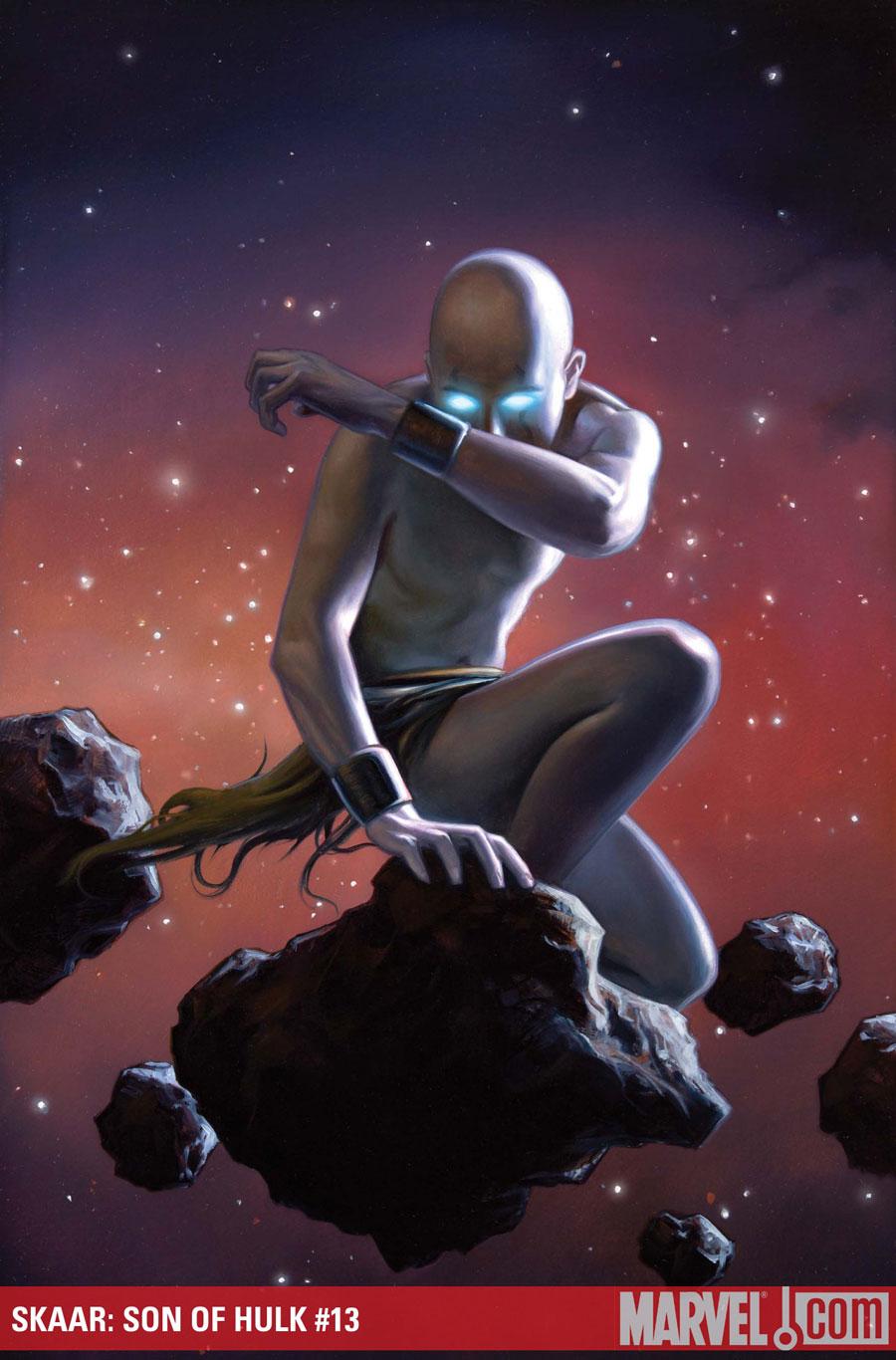
SKAAR: SON OF HULK #13
Writer: Paul Jenkins Art: Andres Guinaldo Publisher: Marvel Comics Reviewer: Mr. Pasty
Count my voice among the millions of collective groans that were heard around the comic book world when it was first decided that Ol’ Greenskin was getting an offspring. I didn’t care for it, just as I didn’t care for the Rick Jones Hulk, Red Hulk or any other Hulk rip-off they wanted to shove down our throats. SKAAR probably could have worked in a “Mighty Joe Young” kind of way but Greg Pak instead created baby Banner, a whiny little brat that actually made filicide a welcome conclusion to this series.Well I’m happy to report that new writer Paul Jenkins has given us the next best thing, another lil’ lad running around the cosmos calling himself the son of Hulk and in this case actually acting like him. Forget about that “Daddy doesn’t love me” crap, this pre-teen paladin is all out of bubble gum. It’s actually such a contrast to the previous books – and I mean that in a positive way – that I can’t believe they didn’t pull the trigger on this new direction any sooner.
Hulk Jr. is breaking out as a former slave and calling himself Hiro-Kala. He’s recently discovered that he’s (cliché alert!) “The One,” a bringer of life and breaker of worlds or something silly like that. He’s also pissed off at Galactus for slurping down his home planet and that kind of triggers his holiness to get into character and start kicking some ass. I like it.
Unfortunately the book isn’t perfect and the character design has a lot to do with that. The original SKAAR (in human form) looked like an extra from one of those Kidz Bop commercials. Hiro-Kala fares no better, as he seems to come right out of the animated AVATAR cartoon. I don’t even think it’s debatable. He’s small, bald, has dark tattoos on his head and glowing eyes when he means business. Another gripe is the forgettable supporting cast -- and I can do without the Tolkien-speak that invariably gets attached to every distant world and mythical race. Last but not least is the disaster of a cover, that has Hiro-Kala doing some sort of bizarre rendition of Nosferatu when he recoils and does that arm thing over his face. I will however give props to the Ming the Merciless-inspired variant cover that had me laughing out loud in the comic shop.
Those are minor complaints, as is my frustration with the familiar storytelling. What makes this book so good? The fact that I can point out its recurring flaws and still keep the pages turning, hungry for more. True, I may have welcomed just about anything after the hit-and-miss issues that preceded it, but SON OF HULK #13 is the SKAAR book that’s finally gotten my attention. It presents such a fresh outlook on the series and an abundance of potential storylines that I’m anxious to see how it all unfolds. Isn’t that why we read comics in the first place? Pick this one up and give it a look if you haven’t already.
Final word: SKAAR may look like Aang and talk like the Beyonder, but he’s got plenty of “Hulk” attitude – something sorely missing from the first twelve issues. More please.
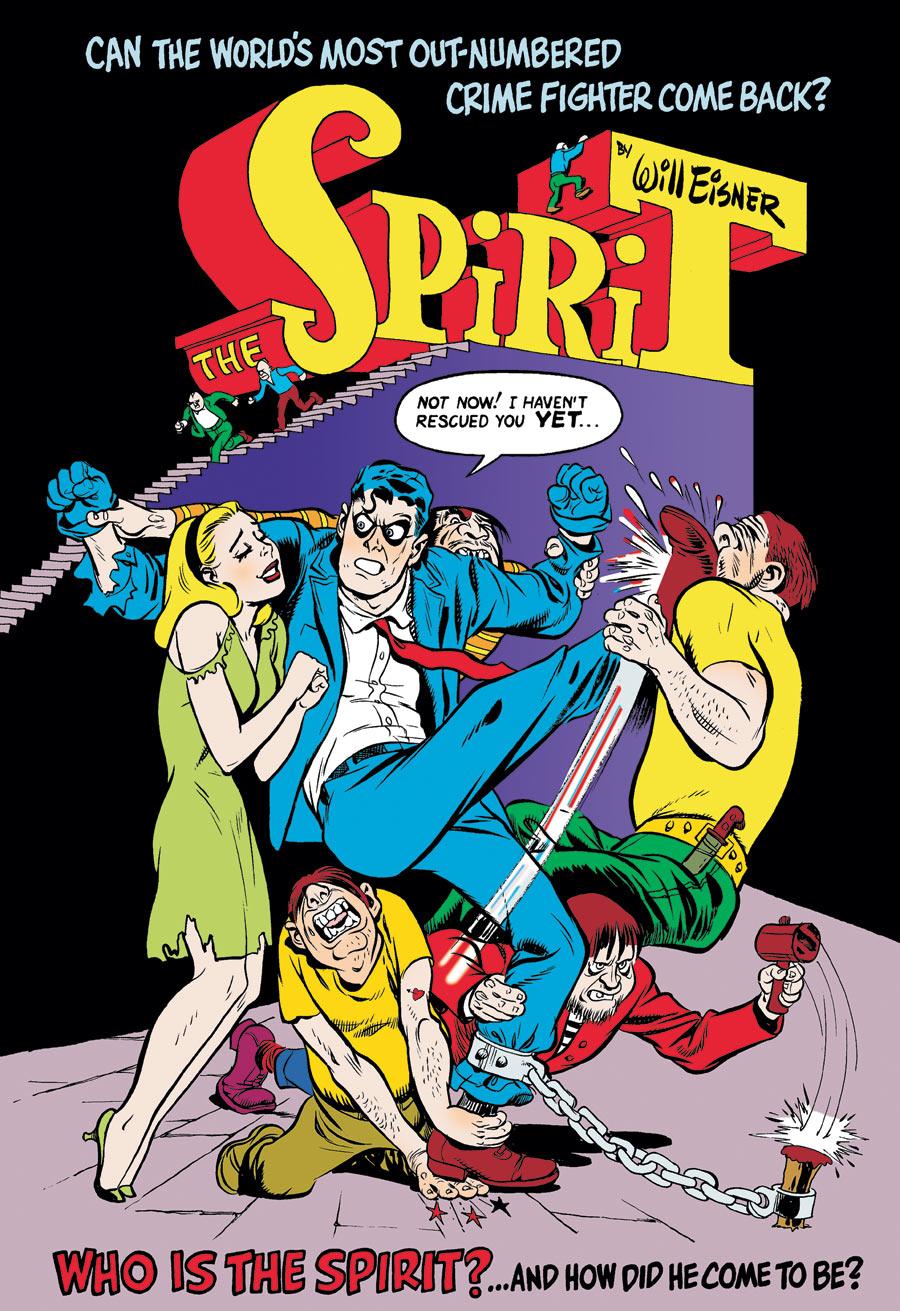
THE SPIRIT ARCHIVE Vol 26
Story by: Will Eisner Art by: Will Eisner Published by: DC Comics Reviewed by: Baytor
The longest and most ambitious Archive series draws to a close with its 26th volume. For those of us who have spent well over a thousand bucks collecting the mausoleum edition of Will Eisner’s influential series, we are left with the satisfaction of knowing that our wallets will be a little bit heavier from now on.For readers, this is likely to be the most disappointing volume of the series, eclipsing the rather dull war years when Eisner had nothing to do with the series. This volume is just collecting the random bits of Spirit lore that have appeared since 1952, so there’s only a handful of stories collected within, including a couple of never finished strips that continued the U.F.O. story left unresolved at series end.
I think this might mark the DC debut of Dave Sim’s Cerebus from the “Cerebus Vs. The Spirit” story co-drawn by Eisner and Sim. We’ve also go the origin stories from the Harvey series (along with a couple of James Bond spoofs) and handful of stories he did for Kitchen Sink that seem to mock the mores and attitudes of the 70s, including a rather ham-fisted defense of Ebony who is being questioned about his ignoble treatment as The Spirit’s partner. Other tales are downright surreal as stereotypical 70s criminals and druggies make their way into the decidedly squarebound world of The Spirit, which seems to suggest Eisner was flirting with a far more adult take on super-heroes a decade before such attitudes started showing up at Marvel and DC.
But most of the 250+ pages are taken up by the various pin-ups, covers, portfolio, coloring book pictures, and convention posters that featured The Spirit. Not being a huge art fan, I just flipped through the pictures, only pausing when I noticed an image that was on the naughty side, such as the nipple slip on page 71, which also featured P’Gell headlights.
There are two big disappointments and one surprise. THE SPIRIT JAM has been reduced to the three pages drawn by Eisner, leaving out the contributions of Milton Caniff, Harvey Kurtzman, Frank Miller, and scores of other; while “The Spirit Casebook of True Haunted Houses and Ghosts” with The Spirit as horror host has been omitted completely. The surprise was the inclusion of Eisner’s final Spirit story, which teams up The Spirit with The Escapist. Seeing as the original publisher, Dark Horse, shall be publishing their own Spirit Archive to collect the short-lived Kitchen Sink Spirit anthology (featuring stories by Alan Moore, Neil Gaiman, and others), I figured it would be included in that volume, but I’m happy to see it here where it belongs.
For the art fans out there, this will probably be a treasure trove of Eisner art well worth the price of admission, but I was hoping for more stories. Still, I won’t begrudge the series its victory lap.
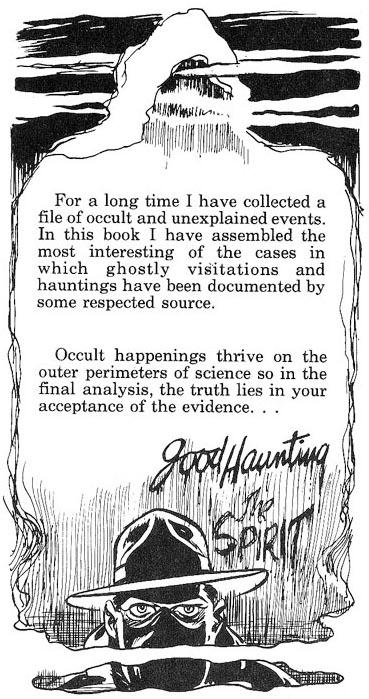
Review Supplement:
THE SPIRIT CASEBOOK: TRUE HAUNTED HOUSES & GHOSTS
Story by: Will Eisner Art by: Will Eisner Published by: Tempo Star (1976) Reviewed by: Baytor
Okay, I had to do it. I had to track down a copy of THE SPIRIT CASEBOOK: TRUE HAUNTED HOUSES & GHOSTS, which was a little mass market paperback published way back in 1976. Back then, I swear every third book released was about ghosts, UFOs, Big Foot, the Loch Ness Monster, or astrology; which makes me suspect that the fluoride in our water had some sort of nefarious effect on our fragile minds. What I love is the hopeful little “1” on the Spirit Casebook folder in the upper corner, which goes to show that Eisner or his publisher was really hoping they had found a way to muscle in on the turf of RIPLEY’S BELIEVE IT OR NOT, whose paperback series was really the Gold Standard of bad 70s supernatural “non-fiction”.The Spirit acts as horror host to 22 ghost stories, all of which are documented to have been reported in other publications so they’ve got to be true. While there’s tales of a ghost who leads his heirs to his lost will and the oft-told story of the restless casket, it’s the gruesome ones that are the most fun, like the ghost who hangs anyone who spends the night in a particular New Orleans jail cell or the handless ghost of a Scottish maiden who earned her fate by betraying her father to her lover.
For those of us with a strange nostalgia for this sort of thing, it’s an enjoyable little read, but I think Eisner made the mistake of making it a glorified illustrated book. The suitably gruesome artwork of Eisner is far more interesting than his matter-of-fact delivery style, but they don’t really work terribly well together since the text is far more restrained than the artwork. Some of the pictures have dialogue, which is dutifully reprinted in the text, which is about as redundant as the old “Superman lifts up the car” captions when the picture clearly shows just that.
Unless you’re a big Eisner fan, this isn’t worth what you’d pay on the after-market, but it is an interesting curiosity that I would have loved to have seen it make its way into the Archive series.
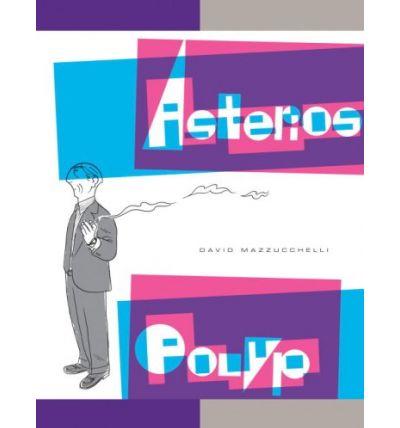
ASTERIOS POLYP
Mastermind: David Mazzucchelli Publisher: Pantheon Reviewed by Humphrey Lee
Okay my fellow nerds, let’s have a little geek huddle. Let us put our heads together and collaborate a little and ask ourselves one simple question: what do we want from our comics? I know I know, that's really a big question to answer in the little, rhetorical space that will be this review, but it still begs asking. Really though, what do we want? Do we just want entertainment? Do we really just want our funny books to be summer movie adrenaline rushes? Are we really that happy to load up forum after forum and usurp bandwidth with chatter of "ZOMG!! SPACE ZOMBIES!" like it's the best thing we've ever witnessed (for the record I do loves me some Space Zombies)? Or do we want something more from time to time? Not all the time, mind you, for all work and no play makes Homer something something (I think that's how it goes). But don't we at least occasionally want for ourselves something more artistic, that instills a sense of importance in ourselves as we take the work in, that raises an extra awareness in us if you will? Do we want something that pushes the boundaries of how we think of the medium, and how it can be used to tell a story? Are we willing to take a little time from our normal reading habits to enjoy a masterpiece when it lands right in front of us, from one of its masters?Now, I honestly didn't mean for any of that to sound condescending, and I know I failed miserably but I figured it was a way to grab some attention for a work that deserves more than its share of it. The thing is, and this might just be the presumptuous part of me speaking, but we seem to be doing a horrible job in our realm of geekdom these days of honoring stuff that really pushes the boundaries of the hobby/art form we love so much and more focusing on material that just tickles the part of us inside that was willing to convince the current us to shell out ten bucks for the piece of shite that was “Transformers 2” this summer. ASTERIOS POLYP though, to go for a horribly transparent segue, is quite transformational in its own right.
Asterios Polyp is a middle aged man who has lost pretty much everything in his life. The story begins a little bit after having lost his wife to divorce and in the middle of a thunderstorm so severe that stray lightning costs him pretty much all his worldly possessions to fire, except the clothes on his back and a few trinkets he escapes with. It's from there that Mazzucchelli takes us, and Asterios, on a journey both through the past and mindset of our protagonist, and also through the comics page itself as he dissects the life of Asterios and the aspects of storytelling that one can accomplish with pencil on paper in this medium. At the very least, Mr. Mazzucchelli's work here could be used as a textbook on how to set and pace a story, as there isn't a wasted piece of space in this book, even when the actual content on the page might be at its most minimal. But the technique, god the technique, is just so flooring in its implementation. From the break down of shapes to the shading and framing to the monochromatic schemes and the usages of space, both dense with content and at times overly empty for effect, it's brilliant to so many degrees, I honestly can't do it justice but to say this is an exhibition on the art of comic book storytelling.
As for the story itself, it's one that's very loaded, almost overwhelmingly so, with so many themes and intellectual jaunts that it will make your head swim a little, but it will also reward you for allowing yourself to open your mind up and make weight of what the words are doing in unison with Mazzucchelli's sublime pencil work. Take Asterios himself for instance, as he is a man that, by admitted nature, is about duality, which is what could also sum up the book. But, y'know what, his duality, his "this is this and that is that" context for any subject and situation keeps unfolding itself deeper and deeper, each into their own subsets and sub contexts that it can be broken down in so many ways which, again, is something Mazzuchelli does expertly with physical, penciled representations. The beautiful part of it all too is that, just when you could almost accuse the book of getting too heady and full of itself (much like this review honestly) you will get that little jab that that's just another aspect of Asterios poking out at the reader, and I assume Mazzuchelli maybe humbling his more precocious readers who want to read WAY too into it as he lets them know that that's not the point of the work, and really life. I could be off base, maybe Mazz is going that intellectual and I'm just not bright enough to get all that he's laying in, but I think he's relating the idea that, yes, life is something that should be examined and explored, but not at the expense of really missing the aspects of it that are joyous and placed simply in front of us.
ASTERIOS POLYP, though, is definitely one of those instant classics that comes along ever so rarely. Easily the best thing I've read all year in the world of comics, and up there with the top handful of exemplary works I've read honestly probably ever. It's one of those great examples of a story that at its boiled down essence is something that anyone can identify with - a tale of finding oneself - and fleshes it out with the right amount of detail, heart, eccentricity, pomp, and a flair for the metatextual. It's a masterpiece of a comic that I believe has an overabundance of innovation, lots of layers that you can read into however much you want, and that is very relatable in its own right. It's a work of brilliance, and something that should be on every book case for those who consider themselves fans of the medium, and not just a genre of it, and that I think will be one of those works that pushes the medium forward with its freshness. So, I guess in the end, this was just a long-winded way of saying: "Transformers it ain't". Now go out and do your bookshelf proud and add this wondrous piece of comic book art to its shelves. It's okay, those nasty Black Lanterns won't mind, and they'll still be here six months from now anyways.
Humphrey Lee has been an avid comic book reader going on fifteen years now and a contributor to Ain't It Cool comics for quite a few as well. In fact, reading comics is about all he does in his free time and where all the money from his day job wages goes to - funding his comic book habit so he can talk about them to you, our loyal readers (lucky you). He's a bit of a social networking whore, so you can find him all over the Interwebs on sites like Twitter, The MySpaces, Facebookand a Blogger Account where he also mostly talks about comics with his free time because he hasn't the slightest semblance of a life. Sad but true, and he gladly encourages you to add, read, and comment as you will.
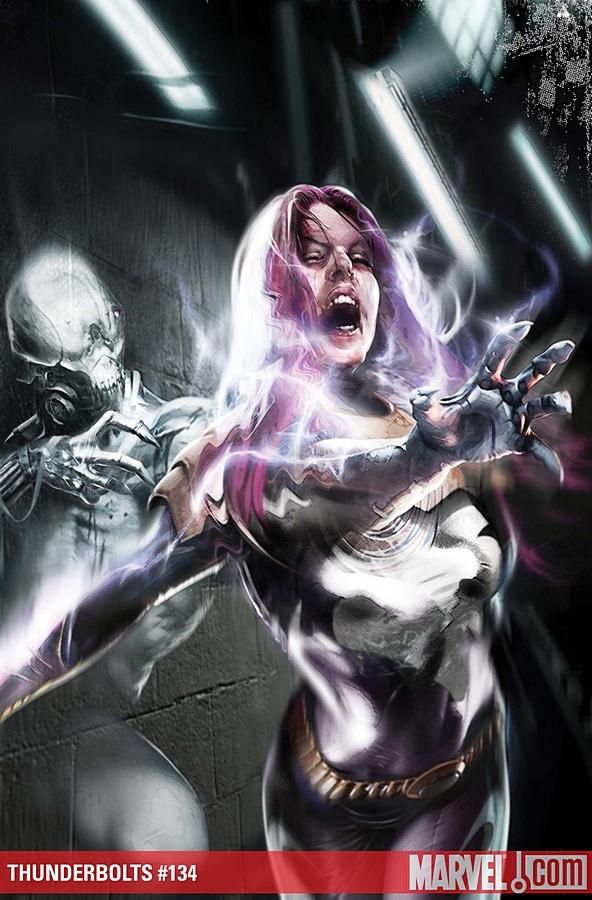
THUNDERBOLTS #134
Writer: Andy Diggle Art: Miguel Sepulveda Publisher: Marvel Comics Reviewer: Matt Adler
This book had gotten a little unfocused since Warren Ellis left. Ellis brought the book back to prominence, assembling a solid mix of A-list villains as well as long-time Thunderbolts. But in the wake of SECRET INVASION, it seemed that Dark Avengers became the default Thunderbolts book; most of the members had gone over to that book, and it also took the “villains pretending to be heroes” concept. So where did that leave this book?Well, new writer Andy Diggle assembled a pretty random cast that appeared to be selected by going through the Official Handbook with a blindfold. Paladin, a mercenary anti-hero from pages of Daredevil and Spider-Man. Robert Kirkman’s “Irredeemable” Ant-Man. The Ghost, an old Iron Man villain. Yelena Belova, the second Black Widow. And the Headsman…um, I don’t really recall anything about him. But I’m pretty sure he existed before.
The new team wasn’t public, so there was no need for them to pretend to be heroes; instead, they were given the vaguely defined premise of being Osborn’s “black ops” team, doing the dirty work behind the scenes that the more public Avengers couldn’t afford to. Problem with this is, if you read the other “Dark Reign” tie-in books, Osborn has a ton of the villains doing his dirty work for him. The Hood has an entire army working for Osborn, and even the Dark Avengers seem to have little problem getting their hands dirty when the situation calls for it. So the premise became a bit muddled, and the book lost anything that made it distinctive.
Now, however, we seem to be going somewhere. Nick Fury has popped up, and appears to be using the Thunderbolts as his main venue to get at Osborn. That puts the book in a position of more significance within the overall “Dark Reign” structure, and makes more sense of the “black ops” theme. There’s a nice bit where Fury instructs his agent to blow her cover in order to save former Thunderbolt Songbird from being murdered at the hands of the new team, because she can be useful to him. This implies that he might, under other circumstances, allow her to be sacrificed in order to preserve his agent’s cover. I know some people will be uncomfortable with this, but it strikes me as dead-on in terms of Fury’s character; he’s not Captain America. He’s a spymaster. He is capable of (and no doubt has engaged in) sacrificing innocent people for what he sees as the greater mission. He wouldn’t be effective at his job otherwise.
Other points of interest in this issue include the reunion of original Thunderbolts Songbird, Mach IV (The Beetle), and The Fixer. It appears that Songbird is intent on “getting the band back together”, as Mach IV puts it. This sets up an interesting dynamic where these former villains are now looking not only to redeem themselves, but to redeem their team’s name from this new group who are tarnishing it. The return of the Radioactive Man (last seen in MIGHTY AVENGERS as part of the “China Force” team) is also teased, and one would think that Atlas wouldn’t be far behind if a team reunion is in order. Perhaps Baron Zemo might also return, enraged at the effrontery of these upstarts (and you know that’s EXACTLY how he’d put it).
There are also a number of running subplots involving members of the new team. A new mystery member named Scourge has been added, and his true identity isn’t too hard to figure out when you note that he’s a fanatically obedient, ultra-violent military man with a penchant for facial modification (though his skin color may throw you off; it appears Osborn is trying to disguise him even from the other members of the team). The Ghost is very intriguingly characterized by Diggle as sort of an OCD paranoiac but with a fairly lucid agenda; I also think his redesigned outfit is really interesting to look at (although I liked the classic costume as well). And the Headsman looks like he will wind up red-shirted to Mister X (a Van Damme clone from Frank Tieri’s Wolverine run).
Finally, the major twist of the issue (and its biggest spoiler, so turn away now to avoid) is the true identity of the Yelena Belova Black Widow. It’s not immediately clear why Diggle chose to go this route; one would think the actual Yelena Belova would have worked perfectly well in this role, but Diggle appears to make reference to her in the past tense, and I haven’t followed her recent stories, so I don’t know if she’s supposed to be dead. In any event, injectable “genetic camouflage” which enables “skeletal reconfiguration” (come on, aren’t we stretching the suspension of disbelief a bit too far?) is used for the disguise, which reveals “Yelena Belova” to actually be Natasha Romanova, the original Black Widow. One possible explanation for this switch is that the original Black Widow has strong ties to the original Thunderbolts, particularly Songbird, so it makes sense for her to be her savior. I hope that Diggle is aiming for that, and makes use of that relationship; it would help make some sense of the switch. But overall, it looks like the comic is heating up and going in an interesting direction.
In most places, Matt Adler goes by the name his mother gave him, but occasionally uses the handle "CylverSaber", based on a character he created for the old DARK FORCES II: JEDI KNIGHT game (one hint of his overweening nerddom). He currently does IT and networking support for the government of Nassau County, NY, but his dream is to write for a living, and is in the process of figuring out how to get publishers to give his stuff a look. In the meantime, he passes the time by writing for AICN, CBR, and a few other places. He has also written for MARVEL SPOTLIGHT magazine.

TOP OF THE HEAP #1
>Writer and Artist: Keith McCleary Publisher: Terminal Press Reviewed by: Liam ‘The Kid’
Note: ‘The Kid’ is 8 years old and has been doing reviews on his own site since August of 2008. And you can now follow the kid’s daily ‘adventures’ on Twitter.TOP OF THE HEAP is a really good comic book. It’s a bit longer than a regular comic and it’s told in just one issue so you can get the whole story without having to wait months for the next parts to come out. The story is that a circus train crashes in the middle of the dessert and all the animals on the train get loose. That is such a good idea for a comic story.
The book doesn’t show any blood or guts but it tells you in the first few pages what happened so you can use your imagination. The first few words are, ‘The ringmaster and the acrobats served as food for the first three days. The clowns were next’. So after the circus train crashes in the middle of the dessert the wild animals eat all the humans from the circus. That’s crazy.
I think that this is definitely a comic book that everyone would enjoy. It’s easy to read for little kids because it’s not too long and all the cool looking animals will keep them interested. And grown ups will like it because it’s just a great story with a pretty interesting idea with really good artwork. I hope he does another story like this soon.
My Rating: 10 out of 10.
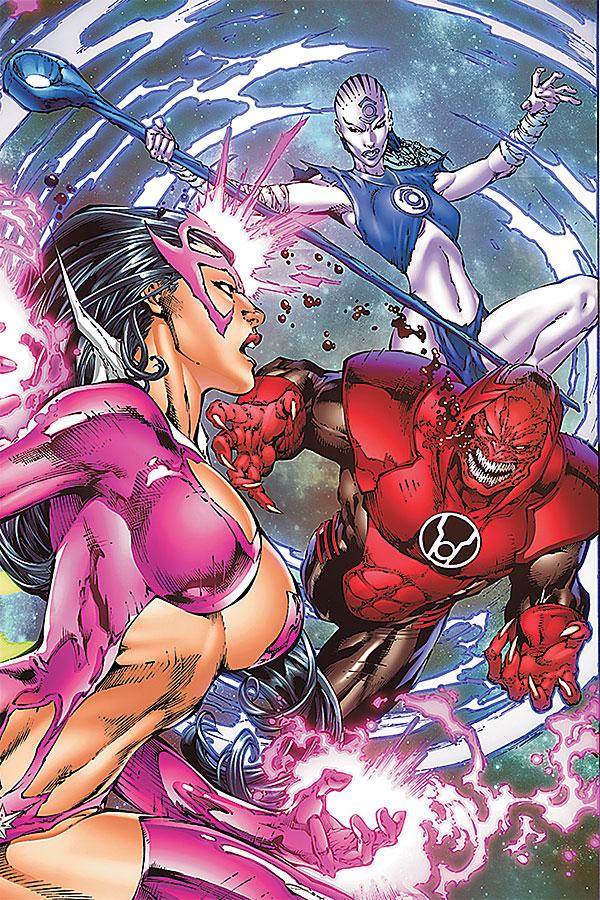
BLACKEST NIGHT: TALES OF THE CORPS #3 (OF 3)
Writers: Peter Tomasi and Geoff Johns Artists: Chris Samnee, Mikey Mayhew and Ivan Reis Publisher: DC Comics Reviewer: Sleazy G
This final issue of the TALES OF THE CORPS backstories tying into the current BLACKEST NIGHT storyline left me deeply conflicted. It had what I felt were two of the minseries’ strongest tales followed by a third piece that left me feeling incredibly disappointed. It felt like grading somebody’s final exam and having them acing the multiple choice, only to completely blow it on the essay section and drag their final grade down with it.First I’ll address the good, and then I’ll get into where the issue went off the rails.
I can still remember when Pete Tomasi started in on a couple of minor writing assignments on DC and contemplated leaving his Editor position. I felt he had some strong ideas and could turn out to be a pretty solid writer. Jump forward a few years and we’ve come to see just how good he is, first cranking out a kickass miniseries in BLACK ADAM: THE DARK AGE and then writing a team book with an incredibly large cast in GREEN LANTERN CORPS. He’s managed to juggle a large number of characters, give them their own distinctive voices and attitudes, stay in step with the overarching storyline developed with Geoff Johns, and kept it all moving along at a rapid clip with a lot of action.
That streak continues here in the first two stories in TOTC #3. The first story focuses on fan favorite/drill sergeant Kilowog. We’re given a look at Kilowog’s time as a new recruit and what he went through in training. In a hilarious nod to “Full Metal Jacket”, his driller is Sergeant Ermey, which leaves Kilowog looking an awful lot like Vincent D’Onofrio’s character. Ermey rides Kilowog pretty hard, at first, and we’re not sure why. As we see Kilowog train, though, we find that he ends up pushing himself harder than any of the other recruits to prove his worth. The recruits suddenly receive a distress signal, are rushed into battle before they’re truly ready, and Kilowog rises to the occasion and becomes the hero of the day, leading to a passing of the green torch from Ermey to Kilowog. The story starts out light, with some winking at the audience and some solid laughs, but it gets serious pretty quickly. Tomasi deftly handles the lighter and darker aspects of the script, and does so quite impressively considering the page count. As for Chris Samnee’s art, it’s amazing. It’s done in a style so similar to Peter Gross that I actually flipped back a few pages in and double-checked the credits, and as far as I’m concerned that’s a compliment. In a story so full of odd-looking aliens, Samnee does a great job of giving them clearly discernible emotions so that we can relate to them more easily. Suffice to say that after his work on this short story I’ll be keeping an eye on what he does next.
The second story focuses on one of the perkiest Lanterns, Arisia. In this tale we learn that Arisia’s family, the Rrabs, are one of the only examples in the Corps of a longstanding legacy—all Lanterns in sector 2815 have come from Arisia’s family. She’s fascinated with the Corps, excited by it, and thrilled that her family is such a unique part of it. Once again, Tomasi shows a skilled hand at balancing the fun and thrills of it and the inevitable crushing loss that comes with the job as Arisia loses her father and then her uncle to the job before finally being selected herself. Her spirit still shines through at the end, though: in a nice nod back to the first story, we again briefly see Kilowog in drill sergeant mode, but Arisia can’t contain her joy at finally being a Lantern. The art for this tale by Mike Mayhew is a huge contrast from that of the previous story, but every bit as strong. It’s a more detailed style that feels more photorealistic when it comes to the characters’ faces, there is some great background work, and the shading is handled wonderfully. It was impossible not to come out of this story feeling deeply for Arisia (and maybe crushing on her a little), and that is in no small part due to Mayhew’s outstanding work.
And now for the part of the issue that made me feel a bit cheated. As you’re probably aware, this minseries was touted as three issues with three stories each, filling in the backgrounds of various members of the different Corps. That was the case for the first two issues, and I expected the same out of the third, but was disappointed to find I didn’t get it. What we got instead was the equivalent of watching the commentary track on a DVD—but not even the DVD you just watched. Instead it’s the commentary for a different DVD you watched a couple of months ago. What we get here is the BLACKEST NIGHT #0 DIRECTOR’S COMMENTARY, with discussion among Geoff Johns, Associate Editor Adam Schlagman and Editor Eddie Berganza, not to mention Ivan Reis’ original pencils pre-inking and coloring.
Don’t get me wrong, it’s kind of cool to see what they were thinking at the time, or what they feel the images or scenes represent; I’m always happy to get a glimpse inside the creative process. It’s just that, well, I already got this material in its full form for free back in May, and now I’ve gotten it a second time in a book I paid $3.99 for. When you advertise a book as having three new stories per issue, and you charge an extra buck an issue premium on it, you should really deliver what was promised at the outset: three new stories filling in character backgrounds, not production-level backmatter. By all means, give us the Free Comic Book Day issue with commentary for free as an added bonus after the three new stories we were paying for; but subbing in something we already have when we thought we were buying something new feels awfully like a bait and switch to me. I’m not knocking what Johns, Schlagman or Berganza had to say, and if it were a freebie at the end of the issue I’d have been fine. I just wish we’d gotten a story about Mogo or Tomar Re or any of the Alpha Lanterns out there—how much do we really know about Green Man or Boodikka? That’s the kind of stuff we were promised, and it was what I came to see.
So in the end, I can’t possibly praise the work of Tomasi, Samnee and Mayhew strongly enough and encourage anyone who is a fan of the Green Lanterns to read those stories. Just be prepared for a letdown with the final third of the issue, as it’s not at all in keeping with the editorial intent of the first 8/9ths of this series and left me wanting a third Tomasi story in its place.
Sleazy G is one of the Original @$$Holes and has reviewed and co-edited for AICN Comics for close to seven years. Sleazy is the unsung hero of AICN Comics, doing much of the editing for the column.
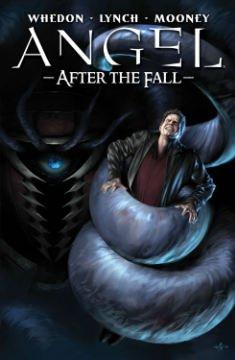
ANGEL: AFTER THE FALL Vol. 4 HC
Story by: Joss Whedon and Brian Lynch Art by: Stephen Mooney and Franco Urru Published by: IDW Publishing Reviewed by: Baytor
There’s only so epic a story can go before I start thinking “for fuck’s sake, win already”. AFTER THE FALL has long been a fairly convoluted mess, with a weakness for bringing back long-gone cast members for the sake of bringing back long-gone cast members, but there were some good twists & turns and it’s been fun exploring L.A. in hell.But the grand finale of the story arc has the worst excesses of cross-over events. Scores of half-remembered characters floating around: check. Lots of pointless death scenes: check. Lots of characters standing around impotently while a giant monster threatens to destroy the world/creation: check. Lots of confusing action that tries to distract you from the fact that nothing terribly interesting or coherent is happening: check.
The first chapter alone features the apparent death of four characters, while another lies on the verge of death. By the third death (which is dead obvious will be undone by story end) I stopped caring. Actually, I didn’t much care the first two times, since both were fairly minor characters and neither had been terribly fleshed out as characters. At least in comic cross-over events, I feel the pang of loss as that guy who starred in that series that got cancelled after 12 issues snuffed it because I kind of liked his book and know without a doubt that that’s the end of his story. Here, it’s just a couple of supporting characters amidst a sea of supporting characters, and, really, who the fuck cares about that guy who was in four episodes of the TV series and didn’t do all that much in those?
The book starts pulling out of its nose-dive in the fourth chapter with the aftermath of the only notable death of the story; which goes to prove that Lynch does a pretty good job with the regular Fang Gang (in the past, he’s also done a good job with supporting characters when they’re not lost in a crowd). By this time, all those pesky supporting characters have been killed off and we’re left with the well-established dynamic of the Season Five cast. The pay-off to all this is pretty familiar ground for Buffy fans, since they already used this idea in one of the season finales, but it works because we know and love these characters. And, yes, the exit from hell is a cheat of absolutely mammoth proportions but I don’t fucking care, because I’m just glad it’s done. The L.A. in Hell story has been interesting in parts, but it’s never felt like Angel to me.
Which is why the final chapter finally puts the book in my good graces as we’re introduced to the new status quo, which is such a natural extension of the TV’s finale that I will dub it (with apologies to Doctor Who fans) Season 6B. There’s not really much a plot to it, just touching base with all the main characters in the post-Hell L.A., but it’s filled with the warmth and humor of the TV show that have been absent from its comic sequel. After the unstoppable angst of the previous three volumes (four if you count the Spike book), it’s great to see the book in a lighter place with a set-up that is guaranteed to make Angel squirm.
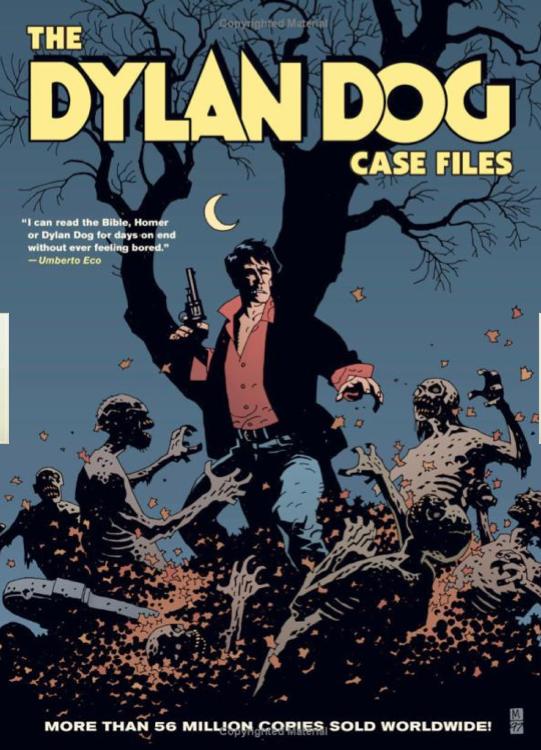
THE DYLAN DOG CASE FILES VOL.1
Written by: Tiziano Sclavi Illustrated by: Various Published by: Dark Horse Reviewed by: superhero
Dylan Dog and I go way back. In 2001 I got married and my wife and I took our honeymoon in Italy. It was a life-changing trip for me in more ways than one. Italy is a beautiful country with breathtaking vistas and museums stocked with works of art that will take your breath away. It’s the sort of place that breathes life into you, especially if you’re at all interested in the arts…which I’ve always been. I expected to see some amazing works of art, and I did, but what I didn’t expect to see was comics. Tons of comics.Apparently in Italy, or at least in Italy circa 2001, comics are everywhere, at least in comparison to here in the states. You get off a train, there’s a newsstand packed with comics. You leave your hotel to go get some gelato and there’s a newsstand packed with comics. You exit a museum and there’s a newsstand overflowing with comics. You get my drift? Comics are everywhere!
Needless to say I was stunned. Not since I was a little kid did I see that many comics out in public! It was fantastic.
There were lots of different genres too. Western, space, horror, soap opera, you name it…they had it. Except for superheroes. Needless to say I went crazy buying Italian comics. I’m not Italian, don’t speak Italian, but the art in these books…the art was fantastic! Beautifully illustrated black and white comics. I poured over the pages of these books and grabbed as many as I could get my hands on. It got so bad that my wife joked that I was going to blow all our honeymoon money on comics. I was obsessed. But not just with every old Italian comic: there was one in particular that just captivated me. That book was DYLAN DOG. The art in DYLAN DOG was gorgeous. I couldn’t read a word of the book but the storytelling was so great, the artwork so detailed that I could get the general idea. I could tell that it was a horror book. I could tell that Dylan Dog was some kind of occult investigator. I could also tell that Mr. Dog was quite down with the ladies, if you know what I mean. It was a fantastic comic even though I couldn’t figure out what the hell the characters were saying. So by the time I left Italy I had a stack of Italian Dylan Dog books and one question was lingering in my mind: why the fuck is this book not being published in America????
That question has lingered in my mind for a long time--until now. I know this isn’t the first time Dark Horse has released any DYLAN DOG material. Several years ago they released these stories in their original individual digest sizes. But they were hard to find and pricey to buy if you had missed them on initial release. This release, THE DYLAN DOG CASE FILES, collects those hard to find Dark Horse books and it’s much more impressive in its presentation. Firstly, it’s huge. What you have in this book are seven digest sized DYLAN DOG stories jam packed into one huge, beautiful volume. It’s certainly worth its weight in gold and the larger pages of this book give the artwork much welcome space to breathe. Visually, this book is beautiful to behold.
So does the story live up to what I hoped it might be when I first came across the untranslated volumes? Yes and no. For the most part the horror elements are fantastic but there is a bit of quirk to these stories that might put off a die hard gorehound comic fan. I found it to be fun, much on the level of Sam Raimi’s Ash character, but I do have to say that the character of Felix, Dylan’s assistant, is pretty much the Jar Jar Binks of the DYLAN DOG universe. Despite the cheap Groucho Marx knockoff DYLAN DOG offers up a very entertaining horror yarn in each volume. As a matter of fact, reading through this book reminded me of the old Marvel horror magazines from the 1970’s. Yes, the art is that good and the stories are that fun. THE DYLAN DOG CASE FILES is old school comic book horror at its best, which is what I pretty much what I thought it would be when I picked up those Italian comics all those years ago. Bravo, Dark Horse, for bringing this book to the good ol’ U.S. of A. Now just keep ‘em coming!
Discovered as a babe in an abandoned comic book storage box and bitten by a radioactive comic fan when he was a teenager, superhero is actually not-so mild mannered sometime designer & cartoonist, Kristian Horn of Los Angeles, California. He's been an @$$hole for three years. Some of his work can be seen at www.kristianhorn.com.
